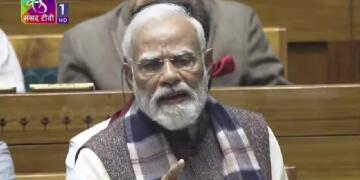Naxalism, also known as the Naxalite-Maoist insurgency, emerged in India as a radical left-wing movement rooted in the ideology of Mao Zedong. Its origins trace back to 1967 in the village of Naxalbari, West Bengal, where a peasant uprising led by Charu Majumdar and Kanu Sanyal sought to overthrow the Indian state through armed revolution. This movement, initially a response to feudal exploitation and agrarian distress, quickly spread to various parts of India, evolving into a significant insurgency.
Several socio-economic and political factors contributed to the rise of Naxalism. These included agrarian distress and feudal exploitation. The agrarian structure in many parts of India was characterized by feudal relations, with landlords exploiting poor peasants. The lack of land reforms and the persistence of bonded labor fueled resentment among the rural populace.
Indigenous communities, particularly in forested regions, faced displacement due to developmental projects like dams and mining. They were often denied rights over forest resources, leading to a sense of alienation and exploitation. It is believed that the success of the Chinese Communist revolution and the appeal of Maoist ideology provided a framework for the Naxalite movement, advocating for the overthrow of the existing state through a protracted people’s war.
The Naxalite movement expanded over the decades, with the formation of the Communist Party of India (Maoist) in 2004 through the merger of the People’s War Group and the Maoist Communist Centre. This consolidation led to a more organized and widespread insurgency.
The “Red Corridor” refers to the belt of Naxalite-affected areas stretching from the northeastern states of India through central India to the southern parts. This region encompasses parts of Jharkhand, Bihar, Odisha, Chhattisgarh, Madhya Pradesh, Maharashtra, Telangana, Andhra Pradesh, and West Bengal. The dense forests, difficult terrain, and lack of infrastructure in these areas provided a conducive environment for the insurgents to establish strongholds and conduct guerrilla warfare.
Government Response and the Decline of Naxalism
The Indian government’s response to Naxalism has evolved over time, from initial neglect to a more concerted military and developmental approach. The establishment of the Ministry of Home Affairs’ Special Task Force and the deployment of paramilitary forces aimed to contain the insurgency.
In recent years, under the leadership of Prime Minister Narendra Modi and Home Minister Amit Shah, the government has intensified its efforts to combat Naxalism. Key initiatives include Operation Black Forest (April–May 2025) under which a major offensive in the forests along the Chhattisgarh-Telangana border, resulting in the neutralization of 31 Maoist insurgents and the seizure of substantial quantities of explosives and weapons. The action led to neutralization Nambala Keshava Rao, the general secretary of the Communist Party of India (Maoist), dealing a significant blow to the insurgent leadership.
Under the leadership of Prime Minister Narendra Modi and Home Minister Amit Shah, India has witnessed a significant decline in Naxalite activities. Their approach combined decisive military action with socio-economic development initiatives, addressing both the symptoms and root causes of the insurgency.
Source stated that the success of operations like Black Forest and the strategic elimination of top Maoist leaders have weakened the organizational structure of the insurgents. Additionally, the focus on infrastructure development and the provision of basic services in tribal and rural areas have helped in reducing the appeal of Naxalism among local populations.
While challenges remain, the concerted efforts of the Central leadership have brought India closer to realizing the goal of a “Naxal-free” nation. The recent developments signal a turning point in the long-standing battle against Naxalite insurgency, with the state regaining control over previously insurgent-dominated regions.































